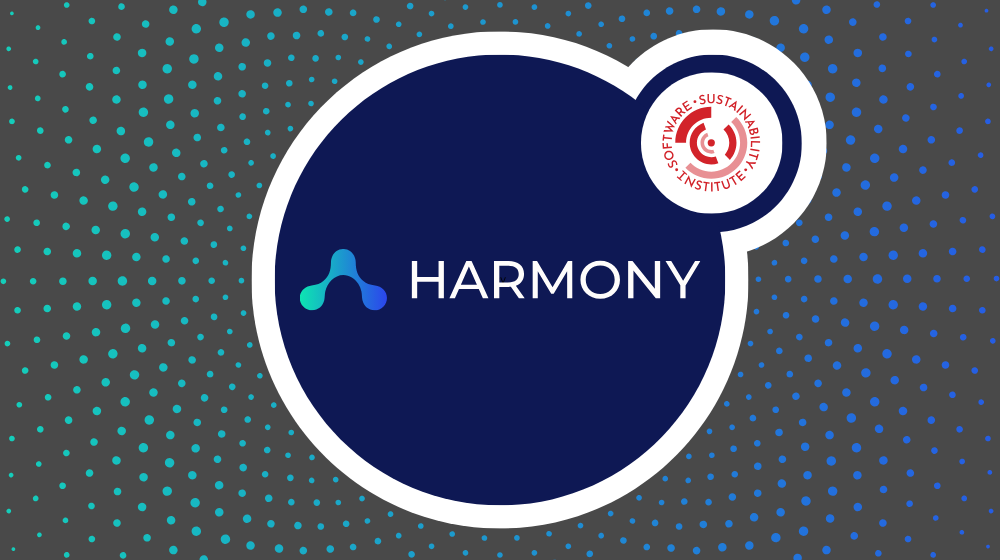Our goal is to extend the lifespan of our project and enhance the usability and longevity of our open-source software. So far Harmony has been funded by the Wellcome Mental Health Data Prize, but we need to find a way to keep the project going longer term. We discussed a number of strategies to achieve this with Steve.
Steve examined our software, including its installation and execution, and provided valuable feedback from a technical standpoint. We also had a call to discuss the software from a community engagement perspective.
Key takeaways include the need to establish a communication strategy to raise awareness of Harmony and build a network of contacts, such as users who have attended our workshops, to engage these communities. Steve provided several recommendations, and we discussed past case studies, such as the Ersilia Model Hub and JournalTOCS, where academic projects have been successfully spun off into the outside world.
Community engagement
Steve emphasised the importance of fostering a strong community around Harmony. Users should not just be users, they are also collaborators. This collaborative approach involves actively engaging with the target audience, particularly researchers, to understand their specific needs and challenges. By incorporating their feedback into Harmony's development and documentation, we can ensure that the tool effectively addresses their pain points and enhances their research workflows.
Building a communication strategy for broader reach
To effectively communicate Harmony's capabilities and its potential impact on the research community, we need to develop a well-defined communication strategy. This strategy should target specific audiences, such as academics, techies, and companies, and tailor messaging to resonate with their unique interests and priorities. Highlighting success stories and use cases that mirror their own experiences will demonstrate the tangible benefits of Harmony and encourage adoption.
Our first thoughts are that our target audience could be divided into three:
1. Academics (PIs and researchers) - these have relatively little time to get started with the tool and may move on to alternatives if it doesn't immediately do what they need
2. Technical professionals and hobbyists, who could work on the open source projects
3. Companies which may want to take the Harmony software and extend it for a commercial purpose, perhaps tailored to a specific industry.
We would need to find the best way to "sell" Harmony to these three groups and get them to grab it very quickly.
Case studies
Prominently displaying successful case studies on Harmony's website will serve as powerful testaments to its versatility and impact. By highlighting how researchers have successfully employed Harmony to harmonise questionnaires and extract meaningful insights from their data, we can attract new users and establish Harmony as a trusted and valuable tool within the research community. For example, we have had interest from the Australian Data Archive, and it would be effective to include their use of Harmony as a case study on Harmony’s blog. We are working with our partners on writing up case studies so that prospective users can find use cases that mirror their own.
Continuous outreach
Our outreach efforts should extend beyond our website and encompass initiatives such as bite-size RSE (research software education) events and engaging hackathons. Bite-size events can provide researchers with concise and digestible training on Harmony's usage, while hackathons offer a fun and interactive setting for techies to explore the tool's capabilities and contribute to its development.
Steve suggested organising meetups or hackathons to encourage technical users to participate and improve Harmony. We also discussed the possibility of using a hackathon to fix and improve Harmony's PDF parsing functionality, which would be an excellent challenge.
Steve also recommended using Mailchimp to establish a newsletter. We are also planning to put some of the challenges that we face in Harmony, such as data extraction from PDF documents, on a site such as Kaggle as a fun challenge for people to get their teeth into.
Technical fixes
Steve identified a number of errors, incomplete documentation, and installation hiccups in the tool, which we are also fixing. Steve’s approach to installing and using the tool as a green developer was very eye-opening and produced several valuable insights from a technical perspective, and Steve has flagged some best practices that we are missing.
Getting involved
If you would like to get involved in developing the Harmony project, please contact us, or feel free to take a copy of our code and submit your changes via Github pull request.
Conclusion
Steve highlighted that the immediate next steps for us are:
1. Develop a communication strategy - this could involve newsletters such as Mailchimp ("sign up for updates and/or events"), more "calls to action", and a case study collection.
2. Build a community: start with our network of contacts (partners and collaborators), and include events such as hackathons, trainings, and webinars.
3. Software fixes, including documentation and making Harmony easier to install.
By implementing the strategies from Steve’s recommendations, we are confident that Harmony will not only become a sustainable and valuable tool for researchers but also will survive and continue to evolve going forward.

